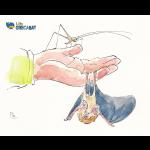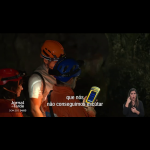ACTION A1.1. Inventory of bat species and their colonies at the project sites
This report presents the results of Action A1.1 (Inventory of bat species and their colonies at the project sites) the project LIFE GRECABAT (LIFE17 NAT / GR / 000522). More specifically, the findings of the visits to the project sites are presented and discussed in the light of the management needs that led to the proposal of the project but also the pressures and threats identified after the start of its implementation. From November 2019 to April 2020, 62 visits were made to the 13 sites of the program. The number and timing of visits to each location depended on the amount and quality of the knowledge already available about their bats, as well as on practical issues. During each visit, visual observations were made and bats were counted and identified to species level where possible. In several cases, the number and / or distance of the bats was prohibitive for on-site counting and identification, so the bats were photographed for a detailed computer study. Counting of bats from the photos was done by A. Kaukaletou with the help of the ImageJ software. Both the bats that were flying inside their roosts during the day, as well as those that were emerging at dusk and/or we flying in and out during the night, were recorded with ultrasound receivers (Anabat Walkabout & EcoObs Batcorder3). The recorded bats were automatically identified with the EcoObs software package (bcAdmin, bcIdent) and the identifications were confirmed one by one, based on the Greek bat echolocation call library maintained in NHMC and using the bcAnalyze software. In some cases, bats were trapped with hand net inside roosts during daytime, or with the project harp trap in cave entrances during emergence, in order to accurately identify the species, sex and reproductive status of the animals. When many bats were trapped (up to several hundred during some trapping nights) but also in several photographs, the identification to species level could not be made and group of species or genus was used instead (Chiroptera sp., large Myotis, Myotis sp. and Rhinolophus sp.). The same problem applies in recordings, as many species have quite similar echolocation calls which are impossible to distinguish. In a few excursions, in addition to the program sites, other, known or new, bat roosts were inspected, enriching our knowledge about the bat colonies in Greece.
| Attachment | Size |
|---|---|
| Action_A1_Bats Inventory_UoC.pdf | 7.73 MB |





